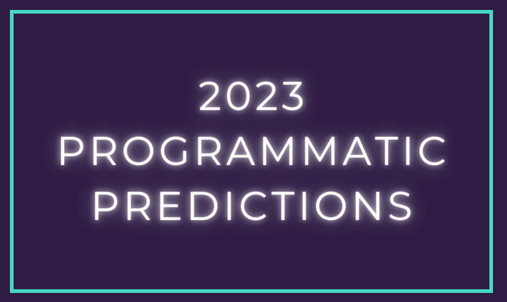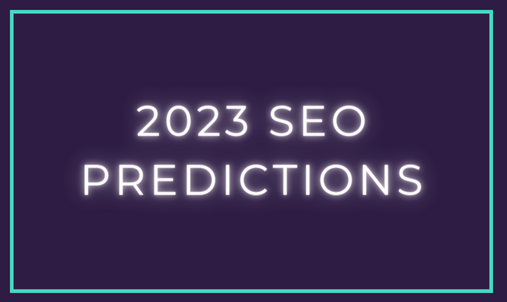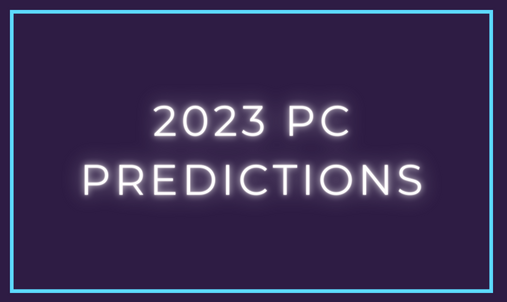2022 has been a rich year for programmatic. The cookie deprecation that preoccupied the industry for a year or more has been pushed back to the second half of 2024, which means that for many sides of the media buying industry, 2023 is time to implement a range of broad-reaching changes: publishers, demand side platforms, trading desks and creative agencies are all having to reconsider their estate and ways of working.
Cookie deprecation
What it means for publishers and planners
Publishers will undeniably have a lot of work to do: for the most advanced, it will be about monetising their audience segmentation even further and opening their first-party data to leverage their insights. Data management platform (DMP) integrations will be key unless the domain is obviously using site list targeting.
Ultimately, there is a lot of work from Google taking place on this topic in the background, i.e with the PAIR system, which will consist of data cleanrooms, similar to Ads Data Hub(ADH). This could also support a brand’s endeavours to tick the box of GDPR compliance.
From a media agency point of view, this is likely to have an impact on media planning processes.
What it means for brands and agencies
For brands, no longer using third-party cookies raises a lot of questions concerning both targeting and attribution tracking. This is where probabilistic methods for both attribution models and targeting rules will become far more valuable. Consultancy for targeting audits, or training on the best use of first-party data will be critical as a way of supporting proper adoption and application of this methodology.
For media planners and traders, it will ultimately mean buying consolidated first-party data (stronger results but higher CPM) and adopting more contextual strategies. In many circumstances, A/B testing will be the best approach to prepare for this transition.
Artificial intelligence (AI) capabilities are also becoming more prevalent, with a boom of custom scripts on some demand-side platforms (DSPs), new actors entering the market with specific targeting USP, and a real growth of self-service platforms in the UK. It looks like this market is very dynamic again following the pandemic, and agencies can massively add value for brands in identifying which partner brings best value to the table for any given brief.
Fundamentally, cookie-less marketing means more transparency, and this can only be a positive change!
Carbon offsetting: a hot topic
While energy is undeniably a hot topic this winter with the war in Ukraine and the impact of increasing energy bills for the UK and European populations, this is also highly relevant to the digital industry, and therefore the programmatic sector.
As the two pillars of programmatic are big data and real time, the industry does require a lot of server agility, especially as one of the key principles of programmatic is to bid within an auction to win the most valuable impression. Hence as opposed to PPC or paid social campaigns – where the bidding would take place within one publisher (i.e. Google, Microsoft or Facebook) – a programmatic campaign requires at least four parties to work together (DSP, SSP, Ad server, network), all of which will have their own carbon footprint.
Of course, the big tech companies will be at the centre of the drive to reduce emissions, but smaller and mid-sized companies will also have a role to play in this. The IAB has launched its Ad Net Zero pledge, which suggests actors in the digital industry will commit to reducing their impact on the environment, while other solutions, third-party and privately-owned businesses, are emerging to help measure, offset and reduce the impact of programmatic campaigns.
Creative messages: B2C efficiency
Alongside the industry’s own impact on our environment, we have seen an increase in campaigns tackling energy efficiency in their creative messaging.
As the Space & Time portfolio benefits from a legacy of expertise in residential property, we probably have one of the best understandings of the media trends that specifically concern the real estate vertical.
While we observed a strong increase in brand activity across most housebuilders just after the pandemic restrictions were lifted, the exceptionally buoyant market and strong forward sold positions saw a drop in marketing activity over the last 12 months.
With winter 2022 widely believed to be the start of a global recession, and with mortgage prices rising quickly and Help to Buy coming to an end , we are witnessing the return of more incentive-led messaging, which tends to drive much higher traffic volumes than brand messages. Maintaining brand presence through a downturn is a key fundamental of marketing, but in terms of the direct response activity required to support sales figures over the short term, price, energy efficiency, or incentive-led creatives seem to be the right strategy to adopt into 2023.
Performance creative
Operating within a cookie-less world could arguably mean brands will have less control over the targeting options to address their key audiences. This will eventually put more pressure on creative production and on the iterative scale needed to support machine learning.
PPC and paid social teams have always put creative first in their recommendations, while the programmatic industry – being fragmented as it is – doesn’t benefit from one unique strong voice, and data has always been the most critically mentioned aspect of the media buying process.
However, with arguably fewer targeting options available from the cookie deprecation, brands making use of programmatic media will undeniably need stronger creative executions and more of them: if we’re less able to determine exactly who will see our message, then the way we deliver it needs to be as impactful as possible. 2022 has already seen a strong increase in attention tracking capabilities and third-party solutions are booming.
Advertisers will benefit from their agency’s expertise in implementing these add-ons to make sure that media spend doesn’t reduce too much on one hand, and that it is part of an integrated plan and leverages always-on optimisations to make a real impact on the other hand.







